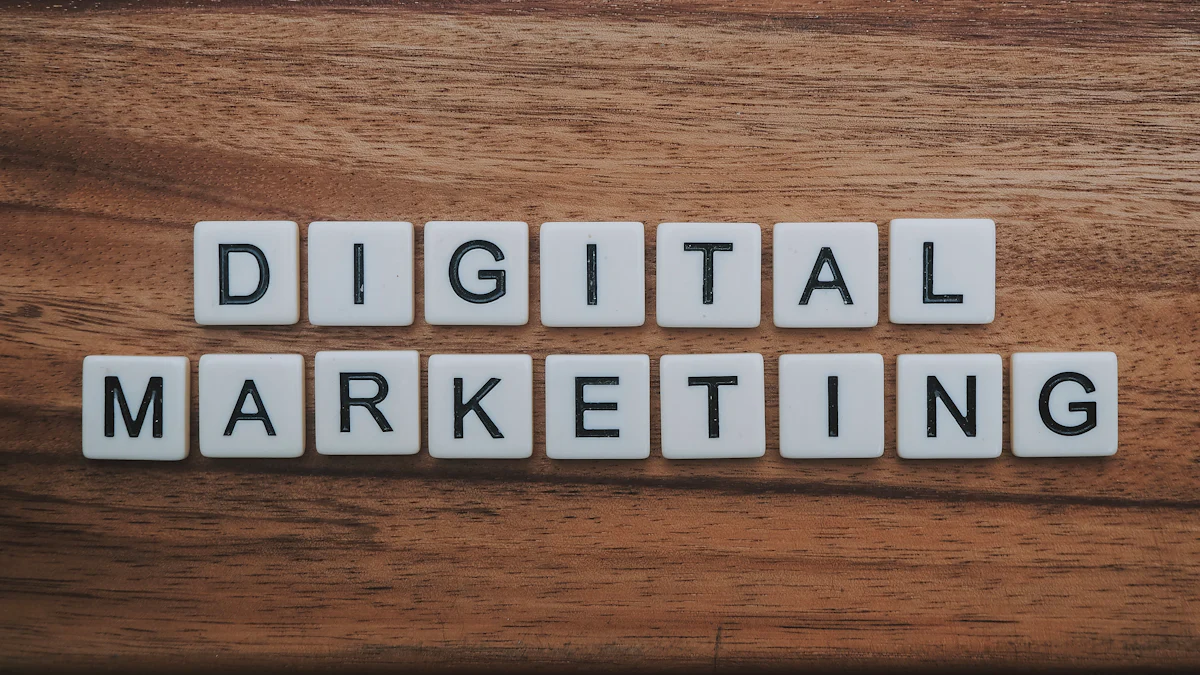How Influencer Marketing Boosts eCommerce Brand Success

Imagine a strategy that not only amplifies your brand’s visibility but also drives real sales. Influencer marketing does exactly that. It connects your e-commerce brand with trusted voices who can inspire their audiences to take action. Unlike traditional advertising, which often feels impersonal, influencer marketing delivers an average return of $4.21 for every $1 spent. In fact, 89% of marketers agree it outperforms other channels.
The growth speaks for itself. By 2024, the global influencer marketing industry is projected to hit $34.2 billion. With 80% of companies already dedicating budgets to this approach, it’s clear that brand influencer marketing is reshaping how ecommerce brands engage with customers. If you want to boost sales and build trust, this is the strategy you need to explore.
Understanding Brand Influencer Marketing
What Is Influencer Marketing?
Influencer marketing is a strategy where you collaborate with individuals who have a strong online presence to promote your brand. These individuals, often called social media influencers, share authentic messages about your products or services. Their endorsements feel more personal and trustworthy compared to traditional ads.
This approach works because influencers build genuine connections with their followers. Their expertise and credibility make their recommendations highly valued. When they talk about your brand, their audience listens and takes action. Whether it’s through product reviews, tutorials, or giveaways, influencers can create a buzz that drives real results for your business.
How Influencer Marketing Works
Ecommerce influencer marketing revolves around leveraging the trust influencers have with their audience. You partner with influencers to showcase your products in a way that feels natural and engaging. For example, influencers might host contests, answer questions, or even go live to demonstrate your products. These activities spark interest and encourage their followers to explore your brand.
Direct communication is key. Influencers act as a bridge between your brand and potential customers. Their ability to connect on a personal level can turn casual viewers into loyal buyers. By aligning with the right influencers, you can amplify your message and reach the audience that matters most to your business.
Types of Influencers in eCommerce
Not all influencers are the same. Ecommerce brands often work with different types of influencers based on their goals and budgets. Here’s a breakdown:
| Influencer Type | Follower Count | Audience Reach | Engagement Level |
|---|---|---|---|
| Nano-influencers | Fewer than 10,000 | Highest engagement rates | Strong relationships with followers |
| Micro-influencers | 10,000 to 100,000 | Targeted engagement in niche markets | Highly engaged and loyal followers |
| Macro-influencers | 500,000 to 1 million | Broader audience reach | Good balance of reach and engagement |
You can also collaborate with brand ambassadors for long-term partnerships. These influencers promote your products consistently, building trust and familiarity over time. Other methods include paying influencers for posts, offering affiliate links, or sending free products. Each approach has its pros and cons, but the right strategy depends on your brand’s needs.
Benefits of Influencer Marketing for eCommerce Brands

Increase Sales and Conversions
Influencer marketing is one of the most effective ways to increase online sales for e-commerce brands. When influencers recommend your products, their followers trust their opinions and are more likely to make a purchase. This trust translates into higher conversion rates. For example, influencers can showcase your products through tutorials or reviews, giving potential customers a clear reason to buy.
This strategy also helps you target niche audiences. Influencers often have followers who share specific interests, making it easier for you to connect with the right customers. By focusing on these audiences, you can drive traffic to your store and increase sales without wasting resources on broad, untargeted campaigns.
Additionally, influencer marketing is cost-effective. Instead of spending large sums on traditional ads, you can partner with influencers to achieve better results at a fraction of the cost. This approach not only boosts your revenue but also ensures a higher return on investment.
Build Brand Awareness and Credibility
One of the key benefits of influencer marketing is its ability to build brand awareness. Influencers introduce your products to audiences who may not have heard of your brand before. Their endorsements feel authentic, making your brand more relatable and trustworthy.
When influencers share positive experiences with your products, they enhance your brand’s credibility. Consumers value genuine testimonials, and influencers can encourage their followers to share their own reviews. This creates a ripple effect, where more people start trusting your brand.
Collaborating with influencers also positions your brand as reliable and customer-focused. Their authentic content resonates with their followers, helping you establish a strong reputation in your industry. Over time, this trust leads to increased loyalty and repeat purchases.
Enhance Customer Engagement
Ecommerce influencer marketing doesn’t just drive sales—it also fosters meaningful engagement. Influencers create content that sparks conversations and encourages their followers to interact with your brand. Whether it’s through comments, likes, or shares, this engagement builds a sense of community around your products.
Micro-influencers, in particular, excel at driving engagement. Their smaller, dedicated audiences value their recommendations and actively participate in discussions. This personal interaction strengthens customer trust and makes your brand more approachable.
Long-term partnerships with influencers can further enhance engagement. By consistently featuring your products, influencers help you maintain visibility and keep your audience interested. This ongoing interaction not only boosts your brand’s presence but also creates lasting connections with your customers.
Strengthen Long-Term Customer Relationships
Building long-term customer relationships is essential for sustainable growth in eCommerce. Influencer marketing plays a pivotal role in achieving this by fostering trust and loyalty among your audience. When you invest in ongoing partnerships with influencers, you create a consistent and authentic brand presence that resonates deeply with their followers.
Long-term collaborations with influencers reassure customers about the quality and reliability of your products. These partnerships allow influencers to share genuine experiences over time, reinforcing your brand’s value. Authenticity becomes the cornerstone of these relationships, as consistent messaging builds familiarity and trust. This approach not only strengthens your connection with existing customers but also encourages new ones to engage with your brand.
To maximize the impact of long-term influencer relationships, consider these strategies:
- Treat influencers as partners by showing genuine interest in their work. Personal engagement fosters mutual respect and commitment.
- Offer exclusive arrangements or loyalty programs to reward influencers for their dedication.
- Involve influencers in the creative process to produce content that feels natural and relatable.
- Regularly express appreciation for their contributions. A simple thank-you can go a long way in maintaining strong partnerships.
| Strategy | Description |
|---|---|
| Co-Creation of Content | Involve influencers in the creative process for authentic content. |
| Long-Term Contracts | Provide stability and commitment, encouraging influencers to prioritize your brand. |
| Loyalty Programs and Incentives | Reward influencers for their commitment and performance. |
| Show Appreciation | Regularly express gratitude to strengthen the partnership. |
By nurturing these relationships, you create a ripple effect. Influencers who genuinely believe in your brand inspire their followers to do the same. This leads to increased brand loyalty, which is critical for retaining customers and driving repeat purchases. Over time, these efforts translate into a loyal customer base that supports your brand’s growth.
Tip: Go beyond campaign deliverables. Stay connected with influencers through personal interactions, such as direct messages or virtual meetings. This extra effort shows that you value them as partners, not just as marketing tools.
Long-term influencer marketing isn’t just about sales. It’s about creating a community of loyal customers who trust your brand and advocate for it. When you focus on building these relationships, you set the foundation for lasting success in eCommerce.
Steps to Implement an Influencer Marketing Strategy
Identify the Right Influencers
Finding the right influencers is the foundation of an effective influencer strategy. You need to focus on influencers who align with your brand and resonate with your target audience. Start by defining your audience. Who are they? What are their interests? Once you know this, look for influencers who share or appeal to that demographic.
Here’s what to consider when choosing influencers:
- Ensure their content aligns with your brand values.
- Check their engagement rates to confirm their followers are active and interested.
- Vet their online reputation to avoid potential controversies.
- Confirm their audience demographics match your ideal customer profile.
Tools like Upfluence and Klear can simplify this process. These platforms help you discover influencers, analyze their performance, and manage influencer partnerships efficiently. By using these tools, you can save time and ensure your efforts target the right people.
Create Engaging Campaigns
To succeed in ecommerce influencer marketing, your campaigns must captivate your audience. Collaborate with influencers to create authentic content that highlights your products. Encourage them to integrate your brand into their daily lives. For example, influencers can share tutorials, host giveaways, or post user-generated content to spark interest.
Consider these strategies for an effective influencer strategy:
- Host influencer takeovers to showcase your brand to a wider audience.
- Use sponsored posts to drive traffic to your website.
- Partner with influencers for guest blogs or co-created content.
Successful campaigns like H&M’s Conscious Collection or Gymshark’s Athlete Program prove that authenticity and creativity drive results. When influencers genuinely connect with your brand, their followers will too.
Measure ROI and Optimize Strategies
Tracking the success of your influencer campaigns is essential. Focus on metrics that reflect real impact, such as conversions and sales, rather than just reach or impressions. Use unique tracking links, UTM parameters, or influencer-specific landing pages to measure performance accurately.
Key metrics to monitor include:
- Engagement rates (likes, comments, shares).
- Conversion rates and sales generated.
- Cost per engagement to evaluate efficiency.
Avoid common mistakes like ignoring long-term customer value or failing to attribute sales to specific influencers. Regularly analyze your data and adjust your influencer marketing strategy to improve results. By optimizing your approach, you can maximize the benefits of ecommerce influencer marketing and achieve sustainable growth.
Tip: Build long-term influencer partnerships to maintain consistency and strengthen your brand’s presence over time.
Why Micro-Influencers Are Key for eCommerce Brands

Higher Engagement and Authenticity
Micro-influencers are game-changers for e-commerce brands. Their smaller, more focused audiences allow them to connect on a personal level, creating genuine relationships that drive higher engagement. In fact, micro-influencers generate up to 60% more engagement than larger influencers. Their average engagement rate on Instagram is 3.86%, compared to just 1.21% for mega-influencers. This means their followers are not just passive viewers—they actively like, comment, and share content, amplifying your brand’s reach.
Authenticity is another reason micro-influencers excel. Their content feels real and relatable, unlike the polished, often scripted posts from celebrities or macro-influencers. This authenticity builds trust. When a micro-influencer recommends your product, their audience sees it as a genuine endorsement, not just a paid promotion. Studies show that 69% of consumers trust influencer recommendations more than traditional ads. By partnering with micro-influencers, you position your brand as credible and trustworthy, which is essential for long-term success.
Micro-influencers also specialize in niche markets. Whether it’s fitness enthusiasts, eco-conscious shoppers, or tech lovers, they cater to specific interests. This targeted approach ensures your products reach the right audience, increasing the likelihood of conversions. Their ability to foster personal and emotional connections with their followers makes them invaluable for brand influencer marketing.
Cost-Effective Marketing for Smaller Brands
For smaller e-commerce brands, micro-influencers offer a cost-effective strategy to maximize marketing budgets. Unlike mega-influencers or celebrities, who charge exorbitant fees, micro-influencers are far more affordable. This allows you to collaborate with multiple influencers without overspending. By engaging several micro-influencers, you can achieve broader reach and higher engagement without breaking the bank.
The value doesn’t stop at affordability. Micro-influencers deliver better results for every dollar spent. Their higher engagement rates lead to more meaningful interactions, which often translate into sales. For brands with limited resources, this combination of affordability and effectiveness makes micro-influencers the ideal choice.
Additionally, their relatable content resonates deeply with their audience, driving better conversions. While their collective reach may be smaller than that of a single mega-influencer, the depth of engagement they provide is unmatched. Building long-term partnerships with micro-influencers can further amplify your brand’s visibility and impact, creating sustained growth over time.
If you’re looking for a cost-effective strategy to grow your e-commerce brand, micro-influencers are the way to go. Their authenticity, affordability, and ability to engage niche audiences make them a powerful tool in influencer marketing.
Influencer marketing offers lasting benefits for eCommerce brands. It boosts visibility, builds trust, and drives sales by connecting you with the right audience. By partnering with influencers who align with your brand values, you can create authentic campaigns that resonate with consumers. Long-term collaborations, such as brand ambassador programs, enhance credibility and foster loyalty, ensuring sustainable growth.
Now is the time to take action. Start by understanding your audience, identifying potential influencers, and reaching out to those who share your vision. With the right strategy, you can transform your brand’s presence and achieve remarkable results. Embrace influencer marketing today and unlock new opportunities for success.
FAQ
What is the best way to find influencers for my eCommerce brand?
Use influencer discovery tools like Upfluence or Klear. These platforms help you identify influencers who align with your brand values and target audience. You can also search social media platforms using relevant hashtags or keywords to find influencers in your niche.
How much should I budget for influencer marketing?
Your budget depends on your goals and the type of influencers you choose. Micro-influencers are cost-effective, often charging $100-$500 per post. Larger influencers may charge thousands. Start small, measure results, and scale your budget as you see success.
How do I measure the success of an influencer campaign?
Track key metrics like engagement rates, conversions, and sales. Use tools like Google Analytics or unique tracking links to monitor performance. Focus on metrics that show real impact, such as revenue generated or customer acquisition, rather than just impressions.
Can small eCommerce brands benefit from influencer marketing?
Absolutely! Micro-influencers are perfect for small brands. They offer high engagement and authenticity at a lower cost. Their niche audiences ensure your products reach the right people, making influencer marketing an affordable and effective strategy for growth.
How long does it take to see results from influencer marketing?
Results vary based on your campaign goals and influencer partnerships. Some campaigns drive immediate sales, while others build long-term brand awareness. Consistent collaboration with influencers often leads to sustained growth and stronger customer relationships over time.
See Also
Best Platforms for Influencer Marketing in E-commerce Growth
Leveraging TikTok Influencer Marketing for Enhanced Brand Growth
Comprehending the Return on Investment in Influencer Marketing
The Benefits of Influencer Travel for Brand Expansion
Advantages and Disadvantages of Influencer Marketing Returns
